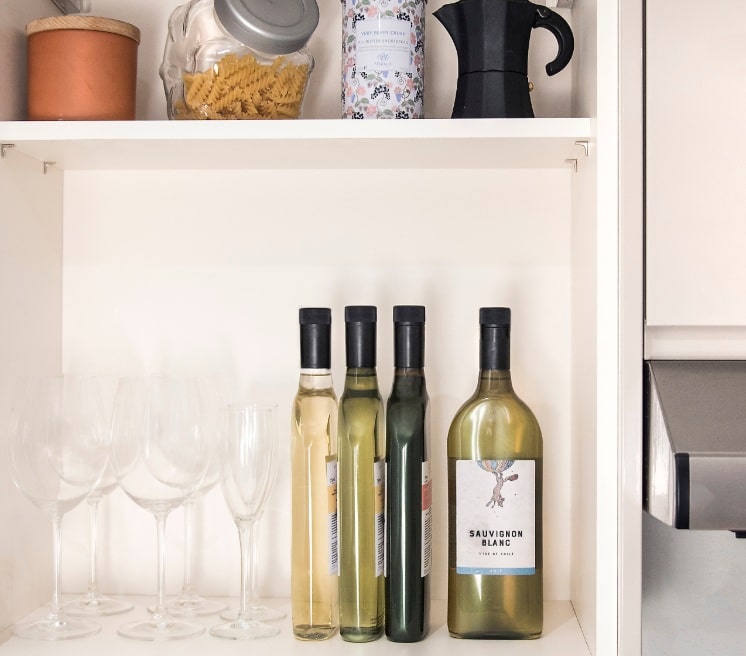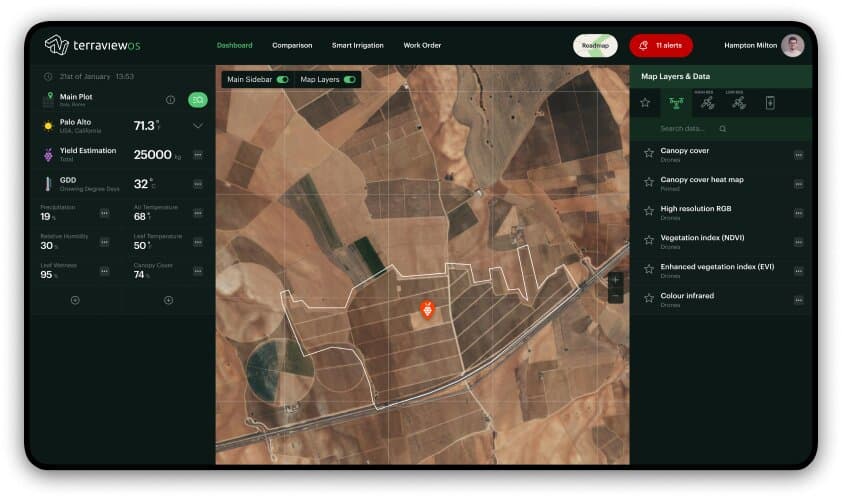Roland Peens: Wine technology trends 2022
By Roland Peens, 31 January 2022

3
While wine has been produced for thousands of years, the industry is now in constant transformation. The environment is of course more controlled and more impacted, with new innovations and techniques to increase yields, quality, and saleability. Signalled by a 200% gain in the Nasdaq over the last five years, the current tech boom is likened to the 1990s internet revolution and tech has moved firmly into wine business (the recent stock market crash notwithstanding). Offerings to the industry in 2022 seem futuristic: Carbon-saving packaging, machine-learning algorithms, blockchain technology and virtual worlds are set to change the industry over the next decade.

ESG (Environmental, Social and Governance) is firmly atop the 2022 corporate agenda – non-financial factors that are now incorporated in determining how best to run a business. The glass bottle, for instance, is the most carbon-rich element of wine. Consuming a massive amount of energy to produce, the average 400g glass bottle is often transported huge distances to export markets. BIB (bag in box) and canned wine have seen huge growth locally and internationally and now a 100% recycled PET bottle provides a smart solution. At just 63 grams, the unique Garçon Wines flat bottle is 40% spatially smaller and 80% lighter, leading to substantive energy savings. This ‘cleantech packaging innovation’ importantly also drives the circular economy and is a much-needed employment and sustainability driver. “We chose to encourage others to realize that the norm may not be good enough and that outliers can sometimes change the status quo to the benefit of all,” says Garçon founder Santiago Navarro.
The flat bottle is already popular in Scandinavian markets with Garcon making inroads into the US, Australia and Europe. Meanwhile, on 5 November 2020, the South African Minister of Environment, Forestry and Fisheries promulgated the Extended Producer Responsibility Regulations (EPR) for paper, packaging and some single use products. The regulations set down compliance targets for plastics, paper and glass by specifying the extent to which each product must be reused, collected and recycled. Compliance was expected by 5 November 2021, and while regulations are often slow to be implemented in South Africa, producers can no longer avoid the repercussions of wasteful packaging.

Using technology to increasing efficiency in the production process is also a driver of wine quality and profitability. Terraview is one such agritech start-up and operating system designed to help wine producers analyse data and make more educated decisions. “Climate change is making producing wine harder and expensive” says cofounder Prateek Srivastava who has already signed up 20 000ha in less than a year, including big names such as La Rioja Alta. Data is collected via satellite imagery and machine learning algorithms compare conditions to previous harvests to calculate yield. More precise planning means better capital expenditure and lower costs.
The Terraview all-in-one platform is able analyse all the data from the vineyard and predicts yield, ripeness and health. Increasingly chaotic weather makes automatic disease alerts all that more important and gives producers more peace of mind. Field observations (hand-written or voice notes, vineyard photos) and spreadsheets can now be consolidated into one platform to better manage vineyards. The more data available to the machine-learning software, the better the predictions and higher the efficiency. A farmer with 150ha, for example, can now have a constant eye on every vine, without having to walk each row. Irrigation and spraying programs can be more precise, further increasing efficiency. Prateek’s goal in servicing the highly sensitive production of wine, is to offer a solution that better manages distribution, capital, carbon footprint and traceability.
Sensors have become dramatically cheaper, now under $10 for a device that measures practically anything – wind, moisture, pressure, distance, thickness, position, pH, you name it, you can know it real time. It is now easier to assimilate and connect infinite sensors through the IoT (Internet of Things) using cheaper solar energy. This allows a constant stream of data from your factory, house, winery or vineyard. From a South African point of view, security is also dramatically upgraded with immediate warning of irregular movement of people, tractors and of course livestock. Robots are also on the horizon for the wine industry, but cheap labour will likely mean a longer uptake in South Africa.
The IoT network operates at low frequencies, relayed by nodes that can mine cryptocurrency with their spare power. Say what? Yes, these towers, dotted every few kilometres, house small computers that will not only feed you information, but also earn you revenue, much like interest on your savings! Cryptocurrencies are digital smart contracts, or tokens, that are exchanged peer-to-peer on the blockchain network. Bitcoin currently comprises 40% share of the crypto market, and while extremely volatile, is likened to gold as a store of value with a limited supply. The newer ‘altcoins’ are more like tech-stocks and offer high potential utility. In fact, cryptos are drawing the smartest minds out of Silicon Valley and into blockchain.
Altcoins are the backbone of the booming NFT (non-fungible token) industry which grew in a few years to $25 billion in 2021. NFTs are unique, tokenised, digital contracts that guarantee authenticity and trust, without a third-party such as a bank or law firm. NFTs composed of digital-only assets are hard to recognise as sustainable, however. Tweets, icons, video clips and property in the metaverse are all being traded with massive investment return. But it’s the ability of NFTs to track provenance and allow seamless trading across markets, making it a highly attractive new way to sell tangible assets. Penfolds has recently launched its second iteration of NFTs, offering a single barrel of Magill Cellar 3 2021 as 300 NFTs. Holders receive VIP Penfolds experiences, can redeem and drink the wine, or can hold the NFT for future resale.

NFTs are traded in the Snoopverse, Snoop Dogg’s metaverse. His virtual neighbours’ property was just sold for $450,000. The owner earns revenue from avatar visitors and virtual partygoers that interact online, along with capital appreciation of the ‘property’. “Gen Z and millennials don’t see a separation between the digital and physical worlds,” writes Guillaume Jourdan on Janeanson.com. “The arrival of the Metaverse, an immersive digital world, signals a paradigm shift for wine brands”. In another instance, a two-week virtual Gucci Garden exhibition attracted 20 million visitors, allowing immediate reach into a new market. Recognising the future purchasers of fine wine, expect leading wine producers to offer a myriad of assets and activities in the ever-growing metaverse.
Boutique producers tend to steer away from technology and some of the greatest wines in the world rely on centuries-old practices. Experience and ability are arguably considered part of the terroir, where artisanship is passed down over generations. Most producers however operate under highly competitive conditions and any increase in efficiency, sustainability or saleability should be welcomed. The world seems to be changing at an ever-increasing rate and the future of wine is already here.
- Roland Peens has 20 years of fine wine experience in retail, imports, auctions and investments. Peens joined as CEO of Wine Business Advisors in 2020, founded in by farmer, marketeer and Vilafonté owner Mike Ratcliffe. WBA combines niche skills with real-world experience covering every angle from strategy to implementation. Look forward to more in-depth monthly commentary on these possible gamer-changers.







Donald | 1 February 2022
A cautionary tale wrt embracing new technologies. I spent over 2 years trying to introduce a new tech product into the SA market that saved costs and increased efficiencies in the cellar all for the cost of one new French oak barrel. I also offered the system free of charge to the two pre-eminent oenology institutions in the country as a training and educational aide. There was zero take up. I found most winemakers to be distrusting of the accuracy of the tech and cynical about its ability to save costs borne out of a concern wrt the restrictive labour laws we have in SA and an insecurity that it was ultimately going to make them redundant. Those that were open to the tech invariably had their hands tied by a suit higher up the management chain and corporate red tape/political power games. Until we change the generally held conservative mindset on tech and the market becomes a lot more progressive in terms of where the costs can be saved then I don’t see things changing too much anytime soon.
Ratcliffe Michael | 1 February 2022
Hi Donald, I don’t think that your observations are necessarily South Africa-specific or unique. A pre-disposition to avoiding change is a common denominator of many agricultural sectors around the world – some think that it is funny. The leaders almost invariably embrace, nay actively seek out change as a means for gaining a competitive edge. The early adopters and the innovators of new technologies are the sharp end of the spear. Many others will wait for evidence-based outcomes, before embracing. I hope that my observations are not naive …
Donald | 3 February 2022
Very true Michael but the technology I am talking about has been widely adopted across Europe – many wineries in Germany (it is a German product), Italy, France and Spain have adopted it with great results. I think there’s a misconception that technology threatens tradition and that the two can’t compliment each other. Sure there are risks but these are far outweighed by the cost saving benefits which are evident by all the case studies available. The fact that our educational institutions would not even consider looking at it and using it free of charge is a massive indication to me that we have a long way to go in our industry as this conservative attitude is then passed on to young, impressionable minds – the winemakers of tomorrow.